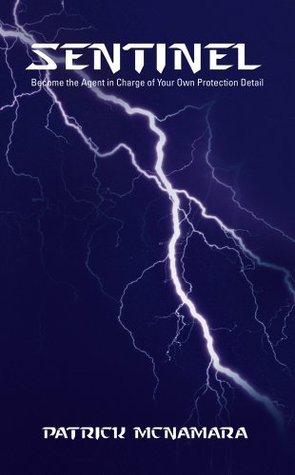Sentinel
Become the Agent in Charge of Your Own Protection Detail
by Patrick McNamara
Published November 29, 2012, 145 pages
ISBN-13: 978-1475960495
Kindle version: $3.03; paperback $13.48
Reviewed by Gila Hayes
I’d been eyeing this book for a few years when a short bout of post-convention illness put some reading time on my schedule. McNamara’s safety instruction takes an interesting approach – one that creates interest in a much-taught subject and it also gives a tool for raising safety preparation amongst folks who, frankly, find our prepared lifestyles a little boring.
McNamara’s idea is that just like a bodyguard tasked with keeping risk and threat at bay, we bear responsibility for the safety of our families and ourselves. Fleshing out the concept, he applies his Special Forces background to personal and family safety, and it makes the subject fun. He opines that primal humans are born with defensive abilities; we just need to “give...permission for these mechanisms to work automatically.”
He compares a protection detail’s task of advance site visits with taking the family to a restaurant. Instead of an advance, the sentinel finds a landmark to help remember the parking spot, identifies several ways out of the parking lot, thinks about lighting if it is going to be dark later, identifies several exits once inside the facility, scans who is seated and who comes in. He illustrates, “I want to know if trouble is coming in, so I ask myself, If I were a sociopath, which direction would I move after entering...What are the natural lines of drift in this establishment?”
Advance planning makes all the difference, and Sentinel describes protective vehicle operation, explaining that “Mobility equals survivability,” discussing using cars to get out of danger. Dealing with cars going in the water, safety in parking lots, and knowing just how agile your car is if you need to swerve sharply at highway speeds are covered. “You don’t want to be thinking, I should have practiced that drill...” when you should be dealing with the problem, he urges.
Additional topics include advice on training, levels of physical fitness, gun safety and marksmanship fundamentals, the tactics of an armed encounter, including being an unpredictable target by moving after drawing, all presented with good rationale. He outlines what an urban survival kit should be stocked with, creates an acronym for critical thinking under stress that outlines: take a look around to gather intel before you rush into a trap thinking you’re evading danger, know your location, manage fear, improvise, commit to staying alive, and learn basic skills like shooting, moving, communicating, navigating, medic skills and evacuation procedures.
McNamara’s definition of self defense is interesting: “Nothing more than recovery from a bad decision or bad luck. You must now be adaptable. I define adaptability as using your existing knowledge to have a positive response to emerging situations.” If your initial defense fails to stop the attack, “you must fail quickly,” he advises. “You must get back into the mix. Do not let the gears stop engaging. Do not spend any more time than humanly possible lamenting about what and why something you did didn’t work. Fail quickly!”
After an interesting discussion of various martial arts and fight training, he warns, “If we are attacked with surprise and violence of action, no amount of training can save us. We can mitigate surprise by exercising a little situational awareness...If we take the element of surprise away from a predator, he or she will fear reprisal and forgo the attack.”
First aid, and med kit supplies are outlined next, followed by a good chapter on home security, and making it harder for a home invader or burglar to break in, as well as some strategies to counter an assailant who made it inside. The chapters on preparation for a natural disaster are full of lists of supplies and how to cope. McNamara is fond of acronyms, but it makes for easy reading, whether for review or a first-time introduction.
I enjoyed Sentinel as a review of safety and survival principles. It would also make a good primer for one new to this way of thinking. It reads fairly quickly, and the material presented sticks in the mind owing to the author’s engaging style.
To read more of this month's journal, please click here.
